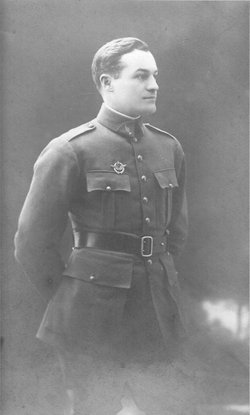Served as Commander of Naval Air Station Porto Corsini.
BIO: Commander Willis Bradley Haviland (1890–1944) was a pioneer military pilot in World War I and a Naval Air Station Commanding Officer in World War II. Part of Lafayette Escadrille, he was among the first American air combat pilots to fight the Germans in World War I, before the United States officially entered the war. He would later become the first pilot to launch an airplane from a battleship.
Haviland attended Kemper Military School and Iowa State College of Agriculture and Mechanic Arts at Ames, and then he enlisted in the United States Navy from 1907–1911. When war broke out in Europe, Willis joined the American Field Service (nicknamed "Friends of France") in 1915.
There he drove ambulances for seventeen months at the Alsace front. When the Field Service and American Ambulance severed ties in the summer of 1916, Willis earned a pilot's license (7 September that year) and entered the American Escadrille, which was soon renamed the Lafayette Escadrille, becoming the sixteenth American volunteer pilot in the squadron.
Haviland was primarily an escort and reconnaissance pilot in the Lafayette Escadrille, and occasionally was assigned to a bombing run. He was only allowed to engage enemies in defense. Consequently, he earned only two confirmed "kills" during this period, not nearly as many as his ace peers who had more aggressive assignments.
In July 1918, Lt. Haviland was reassigned to command the Naval Air Station near the village of Porto Corsini in Italy and train pilots there. He was so efficient that, after an inspection by Admiral H. T. Mayo, he had “the distinction of being the most heavily engaged unit of the U.S. Naval Forces in Europe."
In the postwar, Lt. Haviland was assigned to the USS Texas (BB-35) near Guantánamo Bay as a combat pilot. There, he became the first pilot to launch a plane off a U.S. battleship, and the first pilot to launch a military aircraft off any ship, motivating the United States to begin developing the first military aircraft carriers.
Lt. Haviland subsequently served on the USS Oklahoma, whose service would end at Pearl Harbor in 1941. Afterward, he became the Executive Officer assigned to the establishment of a Naval Air Station on Whidbey Island, Washington, becoming the Commanding Officer of that station in November 1943. He died on Active duty as a Commander in 1944.
NAVY CROSS CITATION: The President of the United States of America takes pleasure in presenting the Navy Cross to Lieutenant Willis B. Haviland, United States Navy (Reserve Force), for distinguished and heroic service as a Seaplane Pilot in which capacity he made many flights for patrolling the sea and bombing the enemy coasts, showing at all times courage and a high spirit of duty.
FOR MORE about the remarkable early aviator Haviland see: http://wbhaviland.net/index.html

PRIVATE CITIZENS SUPPORTING AMERICA'S HERITAGE
American
War Memorials Overseas, Inc.
War Memorials Overseas, Inc.
Haviland Willis Bradley
Name:
Willis Bradley Haviland
Rank:
Commander
Serial Number:
Unit:
Naval Air Station (NAS) Porto Corsini
Date of Death:
1944-11-28
State:
Montana
Cemetery:
Arlington National Cemetery
Plot:
Row:
Grave:
Section 8; 6024-WH
Decoration:
Haviland's piloting skills in World War I earned him a U.S. Navy Cross, a F
Comments:
